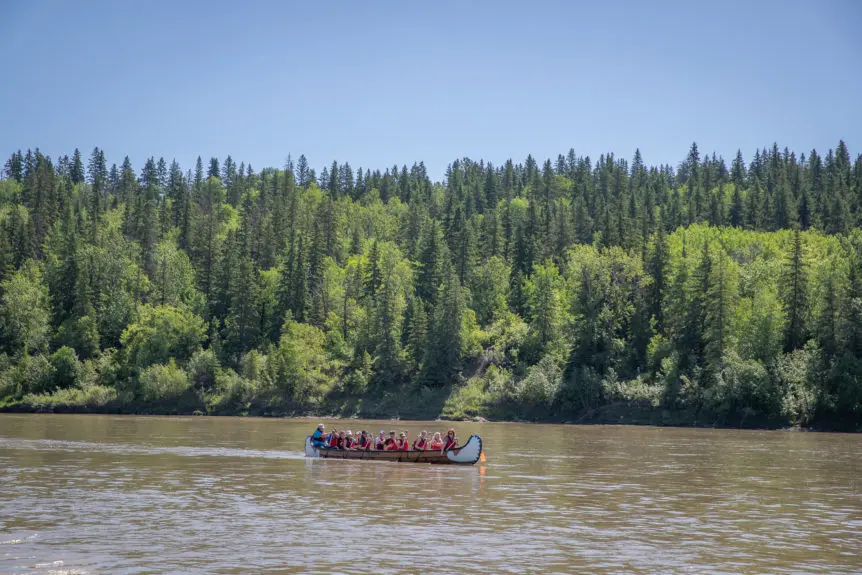Mark Lund, an integral member of the River Valley Alliance’s EPCOR RiverFest water safety team for the past three years, has a lifelong connection to the water. He began teaching swimming lessons at 14, was on the canoe team in Red Deer College, and has even written “Mark’s Guide for Alberta Paddlers”.
EPCOR RiverFest was created in 2017 with the goal of introducing people to all the different ways they can get active in the North Saskatchewan River Valley—and that includes paddling safely on the river.
Here Mark outlines the three pillars of water safety; planning, equipment and training.

Mark Lund on the river
Plan Ahead
Water safety begins on land. Prior to departing on your paddle, identify the five W’s of planning.
Where
It’s important to know where you are boarding your craft, exactly where you are headed, and where you will dock upon reaching your destination. And then let someone at home know all this, especially your ETA and when authorities should be notified if you are overdue.
What will you bring?
Knowing where you are going and the duration of the paddle helps to determine which safety equipment you will bring, as well as how much of it.
Weather
Weather forecasts are especially important when paddling in the river valley because—unlike open lakes where storm clouds are visible for miles before they hit—valleys obscure storm clouds. Storms often catch paddlers by surprise as they suddenly appear over the valley. Check the weather forecast ahead of time to reduce the likelihood of being caught in a prairie storm.
Wear and tear
Always conduct a thorough check of your boat, gear and safety equipment before departure. Ensure all equipment is in good working order.
Water levels
Fast flowing water can carry dangerous debris such as logs stripped from the riverbed. Prior to departing on your paddle, visit the Alberta River Basin website for information on your river route’s depth and water speed to avoid unsafe waters. Generally in Alberta, levels below the mid-summer high range (75%) are safe; much below the fall low range (25%) you may be walking or having trouble finding the deep water channel.
Equipment
Now that you’ve planned your route and checked the weather forecast, it’s time to pack your equipment.
Transport Canada provides a list of the minimum equipment to carry on board:
- Approved Lifejacket
- 15 m Buoyant line – throw bag
- Extra paddle
- Bailer or pump
- Sound signalling device such as a horn, or whistle attached to your lifejacket
- a white light (flashlight) if paddling at night
While not on the minimum equipment list, Mark also suggests packing rain gear, extra clothes, snacks, drinking water, spare parts, and a first aid kit, all in a waterproofed bag.
Training
What good is the equipment if you don’t know how to use it? How do you perform an eddy turn? This is where training comes in. To safely navigate a paddle boat in swift flowing rivers, paddlers require training from certified professional paddling instructors. Haskin Canoe and Aquabatics are just two of the many Edmonton-based outfitters along with a number of canoe clubs (e.g. Ceyana Canoe Club) that provide training to those looking to paddle on the river.
Safety First
Mark offered one final piece of advice…
“Anticipate the problem—always look downstream for what is next.”
While these tips are by no means a complete paddling safety checklist, we hope that they will inspire you to familiarize yourself with safety equipment, training options and safe river practices.
Here’s a great resource to help you know when river levels are safe to go—and when to trek the river valley trails instead.

